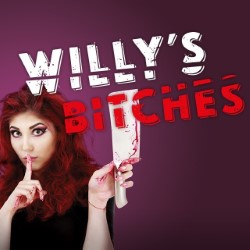Viewing: Blog Posts Tagged with: shakespare, Most Recent at Top [Help]
Results 1 - 2 of 2
Blog: Death Books and Tea (Login to Add to MyJacketFlap)
JacketFlap tags: musicals, shakespare, strength 4, theatre review, willy's bitches, Add a tag
Blog: OUPblog (Login to Add to MyJacketFlap)
JacketFlap tags: austen, VSI, Early Bird, very short Introductions, rossetti, literary history, english literature, H G Wells, jonathan bate, shakespare, bate, Literature, UK, beowulf, A-Featured, Add a tag
By Jonathan Bate
My last three books have been a 670 page life of the agricultural labouring poet John Clare, a two and half thousand page edition of the complete works of Shakespeare, and a 500 page “intellectual biography” of Shakespeare in the context of his age. So how could I resist an invitation from OUP to write a VERY SHORT book! Mind you, it was a ludicrous proposition to introduce a subject the size of English Literature in a mere 50,000 words (I pushed them up from the standard 40k limit for the series by cunningly asking for 60k and splitting the difference…). But the series guidelines were very helpful: “The text should not read like an encyclopedia entry or a textbook; depending on the topic, it may be more comprehensive or more idiosyncratic in its coverage. Don’t be afraid to express a point of view or to inject some style into the prose. Focus on issues, details, and context that make the subject interesting; you should draw your reader in with examples and quotations. Give the reader a sense both of your subject’s contours and of the debates that shape it.” Good principles, which have made for a great series – so many people have said how much they like these little books.
So how did I set about the task? Being a Literary History Man, I began by looking for literary historical precedent.
In 1877 a chaplain to Queen Victoria called the Reverend Stopford A. Brooke published a primer for students and general readers called English Literature. By the time of his death, half a million copies were in print. 160 pages long and produced in handy pocket format, it is the Victorian equivalent of a VSI. Brooke surveyed a vast terrain, from Beowulf and Caedmon to Charlotte Brontë and Alfred Tennyson, with admirable tenacity and vigour, if a little too much patriotic uplift and Anglo-Saxon prejudice for modern taste. But his even-paced chronological march and his desire to give at least a name-check to every author he considered significant meant that his little book too often reduced itself to a parade of the greatest (and not so great) hits of English literature. Faced with a similar task to Brooke’s, and more than one hundred further years’ literary production to cover, I adopted a more varied and selective approach. I made no attempt to offer a historical survey of English poets, novelists, playwrights and non-fiction writers. Frequently I skip over generations in a step; I loop forward and back in time as I identify key themes.
I devote a good deal of attention to questions of origin. From where do we get the idea of literature as a special kind of writing? What could justifiably be described as the first work of English literature and when did the conception of a body of national literature emerge? Which practising novelist wrote the first self-conscious defence of the art of the novel? These are some of the questions I have tried to answer.
Sometimes, I slow the pace and tighten the focus, exploring, for example, a scene from Shakespeare’s King Lear, an instance of the technique of “free indirect discourse” in Jane Austen’s Emma, a poignant stanza of nonsense by Edward Lear, a compositional change of mind on the part of Wilfred Owen, and Seamus Heaney’s preoccupation with prehistoric bodies excavated from Danish peat bogs. I make no apology for these moments of “close reading”: if the study of English Literature is to be true to its object, it must attend to particular words and phrases, verse lines and sentences, movements of thought and structures of writing. My sampling of passages, works, and forms of attention is eclectic – deliberately so, for there is no other body of writing upon earth more varied and inexhaustible than English Literature. That thought makes any attempt to write a “very short introduction” to the subject both deeply




